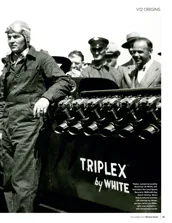But how to get the efficiency needed to match the fuel flow rules?
“The direction has always been to increase compression ratio, while reducing mechanical friction and further reducing weight,” he explained.
The subject of compression ratio is a particularly interesting one. In its quest to drive efficiency, Toyota ended up running in the region of 17:1 compression ratio, an exceptionally high figure for any engine, especially one running spec fuel in an endurance racing environment. As well as pushing the compression ratio ever higher to increase power, Toyota also had to improve the combustion efficiency, allowing it to run the engine increasingly lean. With the latest generation of direct injected, turbocharged engines, this is a somewhat easier (relatively speaking) task than with port injection.
The injection system on the V8 was simple yet elegant in its execution. It used eight solenoid injectors, firing down the individual throttle runners into each inlet port. The injectors were mounted in bosses in the inlet tract, above the throttle valves (rollers, rather than butterflies, minimising flow restriction), with the nozzles angled relative to the inlet path. Very similar in concept to most road car port injection setups.

Rule changes in WEC on fuel-flow forced a design rethink
DPPI
However, the engine was always running on the edge of knock and to ensure it remained reliable, Toyota needed a solution to keep an eye on the combustion. This came in the form of real-time combustion pressure measurement, something that had never been considered for use beyond the dyno test cell before, let alone in endurance racing.












